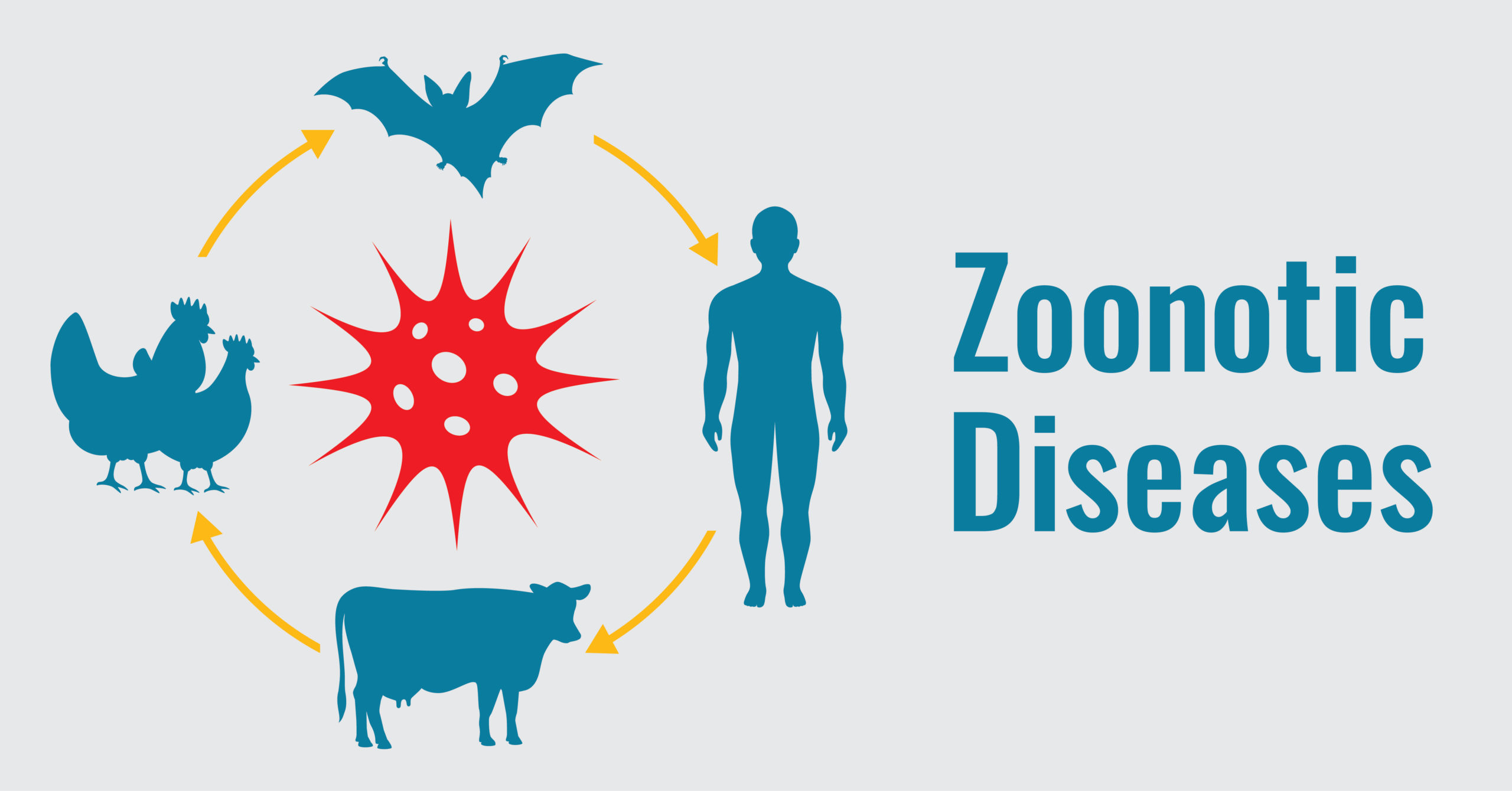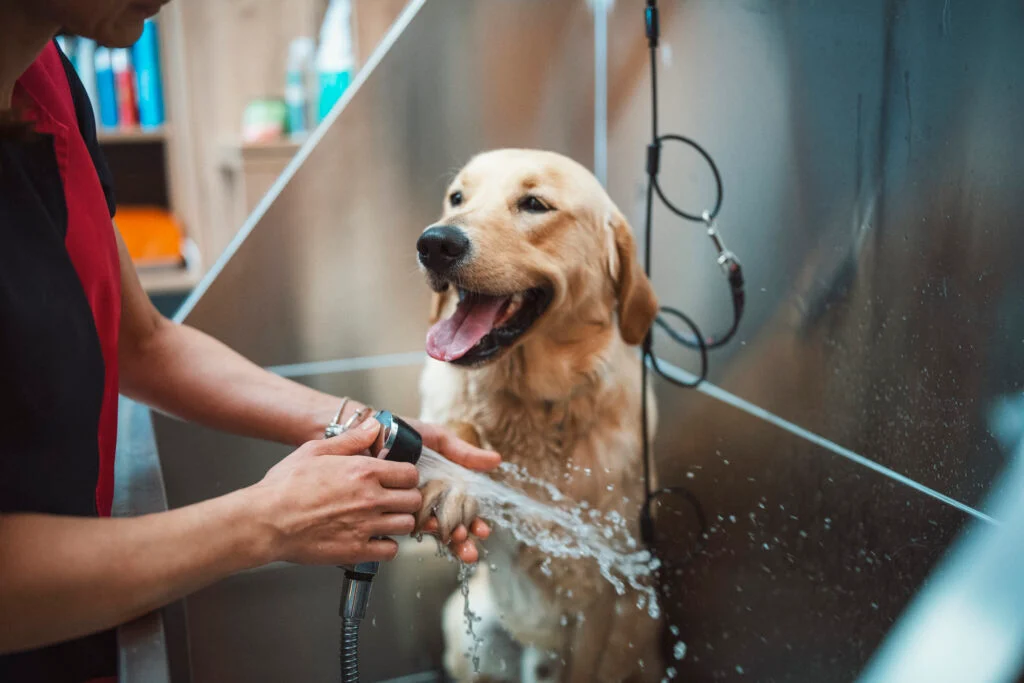Zoonosis comprises infectious diseases that transmit from animals to humans. Zoonotic pathogens may be bacterial, viral or parasitic, or may involve unconventional agents and can spread to humans through direct contact or through food, water or the environment.
They represent a major public health problem around the world due to our close relationship with animals in agriculture, as companions and in the natural environment. Zoonoses can also cause disruptions in the production and trade of animal products for food and other uses.
Zoonoses comprise a large percentage of all newly identified infectious diseases as well as many existing ones. Some diseases, such as HIV, begin as a zoonosis but later mutate into human-only strains. Other zoonoses can cause recurring disease outbreaks, such as Ebola virus disease and salmonellosis. Still others, such as the novel coronavirus that causes COVID-19, have the potential to cause global pandemics.
Zoonosis, or zoonotic diseases can be caused by various pathogens, including bacteria like Leptospirosis and Salmonellosis, Viruses like Rabies, Ebola, and COVID-19, Parasites like Toxoplasmosis and Leishmaniasis and Fungi such as Ringworm.
Which diseases can be classified under Zoonosis?
Rabies
Rabies is a deadly viral disease that affects the central nervous system and is almost always fatal if not treated before symptoms appear. It is primarily transmitted through the saliva of infected animals, usually via a bite. The disease is preventable through vaccination and post-exposure prophylaxis, but once symptoms develop, it is nearly always fatal.

Lyme disease
Lyme disease is a bacterial infection primarily transmitted to humans through the bite of infected ticks, particularly deer ticks (also known as blacklegged ticks). It is the most common tickborne illness in the U.S. and Europe. The bacteria responsible for Lyme disease in the U.S. is Borrelia burgdorferi. In rare cases, Borrelia mayonii can also cause the disease.
Salmonellosis
Salmonellosis is a bacterial infection caused by Salmonella bacteria, primarily affecting the intestinal tract. It’s a common foodborne illness characterized by symptoms like diarrhea, fever, and abdominal cramps, typically resolving within a few days without treatment. However, in some cases, it can lead to more severe systemic infections or dehydration, requiring medical attention.
COVID-19
A viral disease that originated in animals before being transmitted to humans which took the form of a deadly global pandemic in the years 2020-21. COVID-19 likely originated from animals, with bats being the natural reservoir of the virus. Scientists believe that the virus was transmitted to humans through an intermediate host, possibly at the Huanan Seafood Wholesale Market in Wuhan, China.
How does Zoonosis spread?
Zoonotic diseases can be spread through direct contact by touching or handling infected animals or through indirect contact like coming into contact with contaminated environments, food, or water. It can also be vector-borne i.e., transmitted through vectors like ticks, mosquitoes, or fleas.
Zoonotic pathogens can spread to humans through any contact point with domestic, agricultural or wild animals. Markets selling the meat or by-products of wild animals are particularly high risk due to the large number of new or undocumented pathogens known to exist in some wild animal populations.

Agricultural workers in areas with a high use of antibiotics for farm animals may be at increased risk of pathogens resistant to current antimicrobial drugs.
People living adjacent to wilderness areas or in semi-urban areas with higher numbers of wild animals are at risk of disease from animals such as rats, foxes or raccoons. Urbanization and the destruction of natural habitats increase the risk of zoonotic diseases by increasing contact between humans and wild animals.
How to prevent zoonotic diseases?
Understanding and addressing zoonotic diseases is crucial for protecting both human and animal health. Preventing zoonotic diseases requires proper hygiene practices like washing hands regularly, especially after handling animals or their environments, vaccinating animals and humans against specific diseases, cooking food safely to prevent contamination, implementing measures to control vectors like mosquitoes and ticks.
According to the World Health Organization, Prevention methods for zoonotic diseases differ for each pathogen; however, several practices are recognized as effective in reducing risk at the community and personal levels. These include:
Safe and appropriate guidelines for animal care in the agricultural sector help to reduce the potential for foodborne zoonotic disease outbreaks through foods such as meat, eggs, dairy or even some vegetables.
Standards for clean drinking water and waste removal, as well as protections for surface water in the natural environment, are also important and effective.
Education campaigns to promote handwashing after contact with animals and other behavioural adjustments can reduce community spread of zoonotic diseases when they occur.
Antimicrobial resistance is a complicating factor in the control and prevention of zoonoses. The use of antibiotics in animals raised for food is widespread and increases the potential for drug-resistant strains of zoonotic pathogens capable of spreading quickly in animal and human populations.

Washing hands thoroughly with soap and water after handling animals, their food, or environments. This is especially important before eating or preparing food.
Cooking meat, eggs, and other animal products thoroughly to kill pathogens and avoiding consuming raw or undercooked animal products.
Avoiding direct contact with wild animals, as they can carry diseases.
Disposing of animal waste properly to prevent contamination of the environment.
Implement measures to control vectors like mosquitoes, ticks, and fleas, which can transmit zoonotic diseases.
How to keep your pets clean to prevent zoonotic diseases?
Regular grooming helps remove dirt, parasites, and bacteria from your pet’s coat. Brush your pet’s fur regularly, and bathe them as needed.
Minimise direct contact with animals that may be sick or carrying diseases. Wear gloves when handling animals or their waste.
Ensure pets are up-to-date on vaccinations to reduce the risk of zoonotic diseases.
Regularly check your pet for parasites like fleas, ticks, and worms. Use preventative measures like flea and tick medication, and deworming treatments as recommended by your veterinarian.
Regularly visit a veterinarian for pet check-ups and follow their advice on parasite control and vaccinations.

Keep your pet’s living areas clean and hygienic. Clean food and water bowls, bedding, and litter boxes without fail every day.
Clean up after your pet immediately, especially after they’ve been to the bathroom. Dispose of waste properly to prevent contamination of the environment.
It is extremely necessary to regularly monitor your pet’s health and behaviour, and seek veterinary care if you notice any signs of illness.


